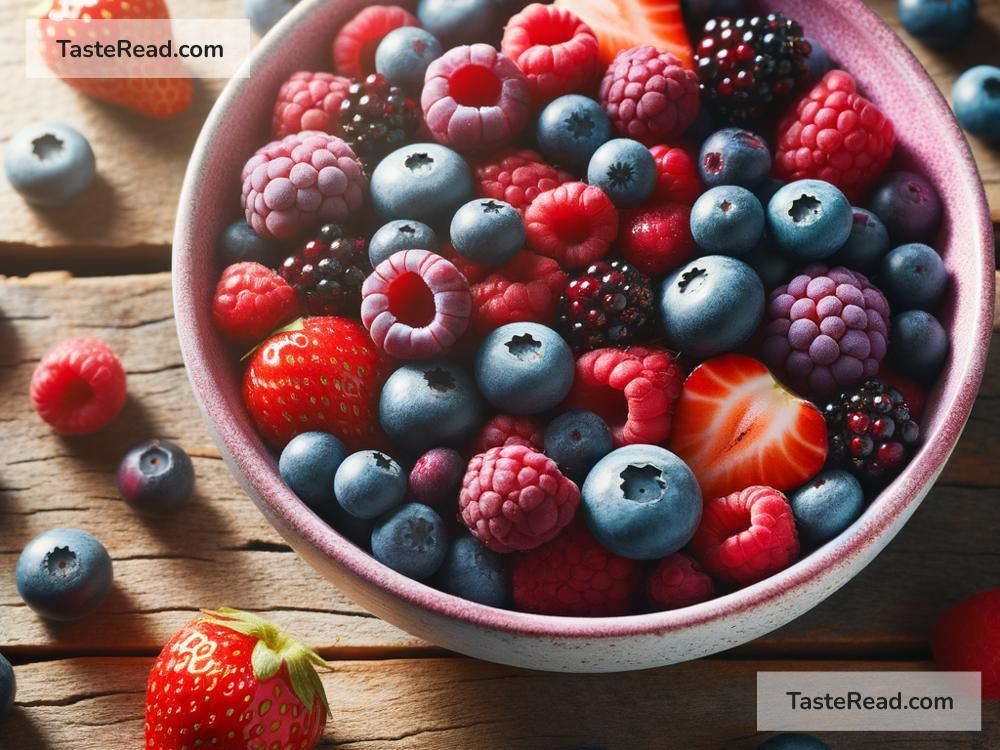The Role of Anthocyanins in Enhancing Fruit Sweetness Perception
Have you ever bitten into a juicy, colorful piece of fruit and thought, “Wow, this is so sweet!”? It turns out that the sweetness you perceive isn’t just because of sugar—it’s also influenced by a group of natural pigments called anthocyanins. These compounds might not change the actual sugar content of the fruit, but they play a surprising role in how we experience sweetness. Let’s explore what anthocyanins are, how they affect fruit sweetness perception, and why this discovery is exciting for our health and the food industry.
What Are Anthocyanins?
Anthocyanins are natural pigments responsible for giving fruits, vegetables, and flowers their vibrant red, purple, and blue colors. They are part of a broader group of compounds called flavonoids, which are antioxidants found in many plants. You’ve probably seen anthocyanins in familiar fruits like strawberries, blueberries, cherries, and blackberries—or even in red grapes that make your favorite wine!
Anthocyanins are not only visually stunning, but they also have health benefits. Research shows that they can help reduce inflammation, improve heart health, and even protect against certain diseases. But science is beginning to uncover another fascinating role for anthocyanins: enhancing how sweet we perceive fruits to be.
Sweetness Perception vs. Actual Sweetness
To understand how anthocyanins work, we first need to differentiate between “sweetness perception” and “actual sweetness.” Actual sweetness refers to the amount of sugar a fruit contains, which can be measured scientifically. Sweetness perception, on the other hand, is how sweet something tastes to us when we eat it. Surprisingly, sweetness perception can be influenced by factors like aroma, texture, and even color.
For example, imagine two strawberries with the same amount of sugar. If one is bright red and the other is pale, chances are you’ll think the brighter strawberry tastes sweeter—even though their sugar levels are identical. This is where anthocyanins come in.
How Anthocyanins Influence Fruit Sweetness
Anthocyanins do not directly affect sugar content, but they do influence how our senses interpret sweetness. Bright, rich colors in fruit signal freshness and ripeness, and studies have shown that people often associate deeper colors with higher sweetness levels. The vibrant reds, blues, and purples created by anthocyanins make fruits appear sweeter even before we take a bite.
But it’s not just about appearances! Recent research suggests that anthocyanins may also enhance sweetness perception through biochemical interactions. These compounds have been found to influence taste receptors on our tongues and olfactory receptors (used for smell) in our noses. Since both taste and smell contribute to our experience of food, anthocyanins may heighten our ability to detect sweetness more effectively than we otherwise would.
Here’s an interesting example: Scientists conducted experiments where people consumed identical fruit juices with varying levels of anthocyanins. Even when the sugar content was the same across all samples, participants consistently reported that juices with higher anthocyanin levels tasted sweeter!
Why Does This Matter?
The connection between anthocyanins and sweetness perception has far-reaching implications for food production, health, and sustainability.
-
Promoting Healthier Eating: As concerns about added sugar grow, using anthocyanins to naturally enhance sweetness perception could encourage people to choose healthier options. Fruits with higher anthocyanin levels might satisfy sugar cravings without the need for sugary additives. This is especially important in fighting obesity, diabetes, and other health issues linked to excessive sugar consumption.
-
Improving Food Quality: Farmers and food producers can use this knowledge to develop fruit varieties with higher anthocyanin levels. These fruits would not only look more appealing but also taste sweeter, delivering a better experience for consumers.
-
Sustainability in Farming: Anthocyanin-rich fruits could reduce the need for artificial sweeteners and extra sugar in processed foods. By growing fruits that feel sweeter naturally, farmers can contribute to more sustainable food systems and a reduced environmental impact from manufacturing sweeteners.
-
Flavor Innovation in Products: For the food and beverage industry, anthocyanin-rich fruits could unlock new ways to enhance flavor profiles in jams, juices, yogurts, and other products. Consumers would benefit from delicious foods with less sugar but more perceived sweetness.
Beyond Sweetness: Anthocyanins and Overall Appeal
It’s important to note that anthocyanins don’t just make fruits taste sweet—they also enhance their overall appeal. A bowl of colorful, vibrant berries is visually inviting and signals freshness, making us want to eat them. This highlights another powerful role of anthocyanins: they help fruits tell a story of sweetness, nutrition, and enjoyment, all through their natural colors.
Conclusion
Anthocyanins are much more than beautiful pigments—they’re key players in shaping how we experience the sweetness of fruits. By influencing both how fruits look and how they taste, these compounds help us appreciate fruits not just for their natural sugars but also for their vivid colors and flavors. As science continues to reveal the potential of anthocyanins, the way we grow, eat, and enjoy fruits could fundamentally change for the better.
So the next time you savor a plump red cherry or sweet purple grape, take a moment to appreciate the role anthocyanins play in making it taste—and look—so good. Nature has its own tricks for making food irresistibly delicious, and anthocyanins are one of its best-kept secrets!


